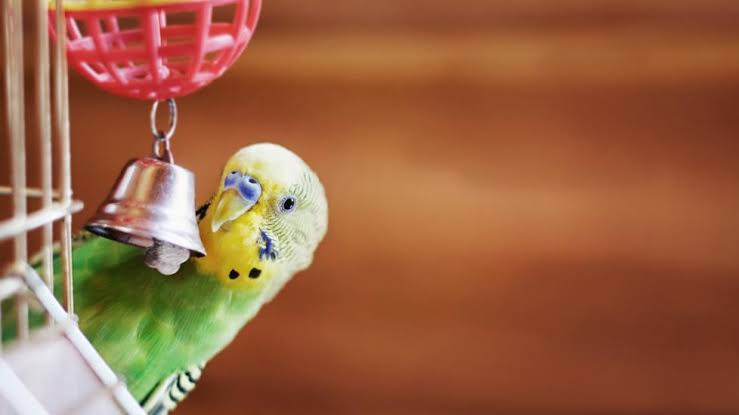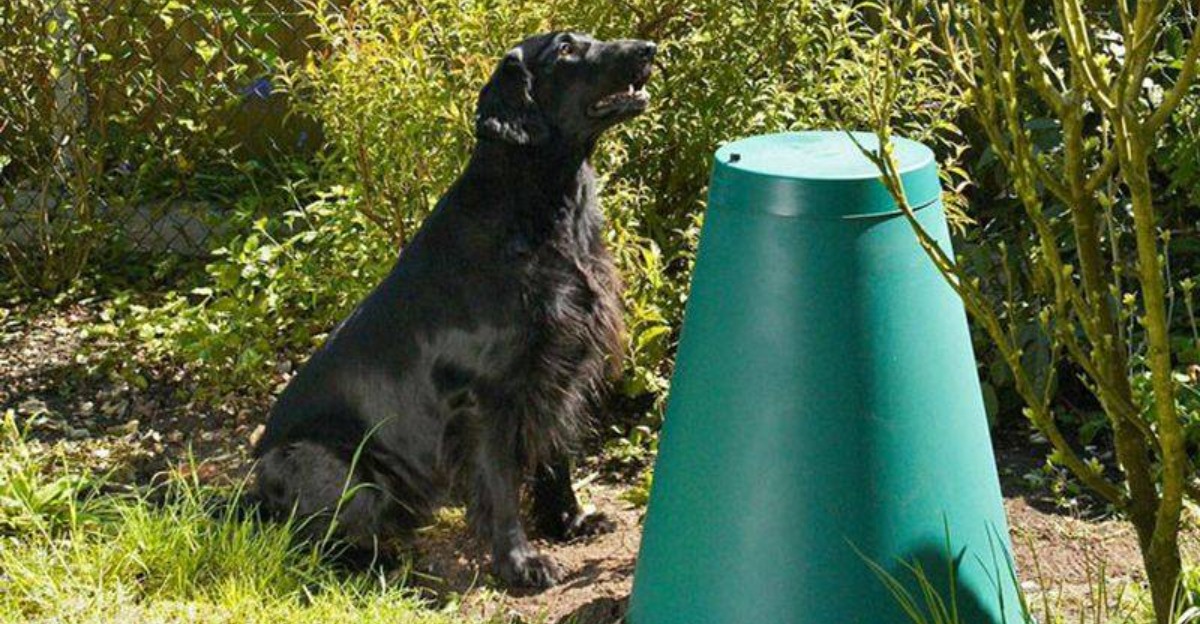
Low-Maintenance Bird Breeds That Make Wonderful Indoor Pets
Low-maintenance birds like budgerigars, cockatiels, canaries, lovebirds, and finches are perfect indoor companions. They are small, social, and require minimal grooming, space, and dietary care. These birds offer companionship, vibrant colors, and cheerful songs without demanding constant attention.
🐶 Pet Star
37 min read · 5, Oct 2025

Introduction
Birds are captivating companions—they sing, chirp, and bring life to any indoor space. However, not all birds are suitable for every household. Many bird breeds require intensive care, specialized diets, or constant social interaction. For busy individuals, apartment dwellers, or first-time bird owners, low-maintenance bird breeds can be perfect companions.
Low-maintenance birds are easier to care for, adapt well to indoor living, and still provide companionship, entertainment, and affection. With the right choice, you can enjoy the beauty, sounds, and charm of birds without feeling overwhelmed.
In this article, we’ll explore some of the most popular low-maintenance bird breeds, their care requirements, enrichment tips, and daily routines to ensure your feathered friend thrives indoors. Birds are increasingly popular choices for indoor pets, offering companionship, beauty, and a touch of nature within the home. However, not all birds require the same level of care. For those seeking an engaging pet without an overwhelming maintenance routine, certain bird breeds are ideal. These low-maintenance birds combine manageable care requirements with friendly personalities, making them perfect for beginners or busy pet owners.
One of the most well-known low-maintenance birds is the budgerigar, commonly called a budgie or parakeet. Budgies are small, vibrant, and full of personality. They are highly social birds and enjoy interaction with humans but can also entertain themselves if left alone for periods. Budgies thrive in cages with adequate space for flying and perching. Their diet primarily consists of high-quality seeds and pellets, supplemented with fresh vegetables and occasional fruits. Regular cage cleaning and fresh water are essential, but compared to larger birds, budgies are relatively easy to care for. Their cheerful chirping and playful nature make them a delightful addition to any home.
Another excellent option is the cockatiel. Known for their charming crests and gentle demeanor, cockatiels are slightly larger than budgies but remain manageable. They are affectionate, often forming strong bonds with their owners, and can even learn to mimic sounds and whistles. Cockatiels require a balanced diet of pellets, seeds, and fresh produce. Their grooming needs are minimal, though regular nail trimming and occasional beak care may be necessary. Providing toys and perches inside their cage ensures they remain active and mentally stimulated. Cockatiels are quiet enough for apartment living while still being engaging companions.
For those who prefer smaller birds, finches are an excellent choice. Finches are known for their delicate appearance and melodious songs. Unlike budgies or cockatiels, finches do not require direct handling and are happiest in groups of their own kind. Their cages should be spacious enough to allow flying, as finches are highly active birds. A diet of high-quality finch seed mix, along with fresh greens, ensures their health and vitality. Finches are remarkably low-maintenance because they require minimal social interaction from humans, making them perfect for people who enjoy observing birds rather than handling them frequently.
Lovebirds are another appealing option, particularly for those who enjoy bright colors and playful personalities. Although lovebirds are small, they are energetic and enjoy social interaction, often forming deep bonds with their owners or another lovebird. They require a diet of pellets, seeds, fresh fruits, and vegetables. Lovebirds are intelligent and curious, so providing toys and activities in their cage is essential to prevent boredom. While they may need more attention than finches, they are still considered low-maintenance relative to larger parrot species. With proper care, lovebirds can live up to 15 years, offering long-term companionship.
A unique choice for low-maintenance indoor birds is the canary. Canaries are celebrated for their singing ability and gentle nature. They are solitary birds by preference, meaning they do not need constant companionship, although they do enjoy being near other canaries. Canaries require a simple diet of seeds, fresh vegetables, and the occasional fruit treat. Cages should be spacious enough for flight, and regular cleaning is necessary to maintain hygiene. Canaries do not require much handling, making them ideal for those who wish to enjoy a pet primarily through observation. Their melodious songs add a peaceful ambiance to any room.
Parrotlets are another excellent low-maintenance bird breed for indoor living. These tiny parrots, often referred to as “mini parrots,” are playful, curious, and intelligent. Despite their small size, parrotlets have bold personalities and enjoy interacting with their owners. Their care is straightforward: a diet of high-quality pellets, seeds, and fresh vegetables, combined with a clean cage and regular mental stimulation. Parrotlets are relatively quiet compared to larger parrots, making them suitable for apartment settings. With proper care, they can live for 15 years or more, providing long-term companionship without the intensive maintenance that larger parrot species require.
For those seeking birds with vibrant colors and easygoing temperaments, cockatiel hybrids or small parakeet varieties such as the Bourke’s parakeet can be ideal. Bourke’s parakeets are calm, enjoy quiet observation, and require minimal handling, yet they are visually stunning with their soft pastel plumage. Their diet is simple, consisting of seeds, pellets, and occasional fresh fruits and vegetables. They are quiet, gentle, and adapt well to indoor living, making them perfect for a tranquil household.
When considering a low-maintenance bird, it is essential to understand their basic needs. All birds require a safe, comfortable environment with adequate space for movement, clean food and water, and mental stimulation. While low-maintenance birds require less direct interaction and complex care routines, neglecting these essentials can lead to health problems and behavioral issues. Regularly cleaning their cage, providing fresh water and food, and offering toys or perches will keep them happy and healthy. Additionally, monitoring their health, observing changes in behavior, and ensuring proper nutrition are vital for long-term well-being.
In conclusion, choosing a bird as a pet is an opportunity to bring joy, color, and life into a home. Low-maintenance breeds like budgerigars, cockatiels, finches, lovebirds, canaries, parrotlets, and Bourke’s parakeets provide engaging companionship without overwhelming care requirements. These birds are suitable for beginners or busy individuals who want the beauty and charm of a pet bird without the extensive commitment of larger, high-maintenance species. By providing a safe environment, balanced diet, and mental stimulation, owners can enjoy the presence of a lively, cheerful bird in their home for many years. Selecting a low-maintenance bird is not only practical but also immensely rewarding, offering a unique connection to nature within the comfort of indoor living.
What Makes a Bird Low-Maintenance?
Low-maintenance birds share several characteristics:
- Simple Diet Requirements: Can thrive on seeds, pellets, and occasional fruits/vegetables
- Independent Nature: Do not require constant attention or interaction
- Small Size: Easier to house and clean
- Adaptable Behavior: Handle indoor conditions well
- Longevity: Moderate lifespan, making commitment manageable
These traits do not mean neglect—they still need love, stimulation, and proper care—but they are more forgiving for beginner or busy pet owners.
Top Low-Maintenance Bird Breeds for Indoor Living
1. Budgerigar (Budgie / Parakeet)
Budgies are small, colorful, and playful birds. They are one of the easiest species to care for and make fantastic companions.
Care Highlights:
- Diet: Seeds, pellets, occasional fruits/veggies
- Social Needs: Enjoy interaction but can be independent
- Cage Size: 18x18 inches minimum
- Lifespan: 5–8 years
Enrichment Ideas:
- Simple swings and ladders
- Shreddable paper toys
- Occasional out-of-cage flight in safe rooms
2. Canary
Known for their melodious singing, canaries are ideal for people who appreciate birds without intensive handling.
Care Highlights:
- Diet: Seeds, fresh greens, occasional boiled egg for protein
- Social Needs: Prefer solitary or paired living
- Cage Size: Long horizontal cage for flying
- Lifespan: 10–15 years
Enrichment Ideas:
- Perches at different heights
- Mirrors or hanging bells
- Natural sunlight or full-spectrum indoor lighting
3. Finch
Finches are small, active, and charming birds. They thrive in groups and are easy to care for, making them perfect for apartments.
Care Highlights:
- Diet: Seed mix, vegetables, occasional fruit
- Social Needs: Best in pairs or small flocks
- Cage Size: Spacious horizontal cage for hopping and flying
- Lifespan: 5–10 years
Enrichment Ideas:
- Multiple perches and swings
- Shreddable nests
- Variety of perching heights to encourage movement
4. Cockatiel
Cockatiels are slightly larger but still considered low-maintenance. They are affectionate, quiet, and have charming personalities.
Care Highlights:
- Diet: Pellets, seeds, fruits, vegetables
- Social Needs: Enjoy human interaction but can self-entertain
- Cage Size: 20x20 inches minimum
- Lifespan: 12–20 years
Enrichment Ideas:
- Chewable toys and bells
- Occasional out-of-cage supervised play
- Soft music or gentle vocal interaction
5. Lovebird
Despite their name, lovebirds do not require constant companionship if socialized early. They are hardy, colorful, and playful.
Care Highlights:
- Diet: Seeds, pellets, fresh fruits/vegetables
- Social Needs: Enjoy company of same species but manageable alone
- Cage Size: Medium cage with climbing space
- Lifespan: 10–15 years
Enrichment Ideas:
- Hanging ladders and ropes
- Foraging toys
- Mirror for solo play if alone
Daily Care for Low-Maintenance Birds
Morning Routine:
- Offer fresh water and food
- Remove uneaten fruits or vegetables
- Quick cage clean of droppings
- Short social interaction or gentle vocal communication
Midday:
- Allow safe out-of-cage time if possible
- Rotate toys to keep stimulation high
- Observe for any signs of illness (fluffed feathers, lack of appetite)
Evening:
- Ensure food and water are topped up
- Provide quiet space for rest
- Dim lights or cover cage partially for night
Weekly Care Tips
- Deep clean the cage, perches, and food/water dishes
- Inspect toys for wear and tear
- Offer new enrichment items like shreddable paper or swings
- Check nails, beaks, and feathers for healthy condition
- Rotate toys and perches for novelty
Enrichment Ideas for Low-Maintenance Birds
- Foraging Games: Hide seeds or pellets in paper or small boxes
- Sensory Stimulation: Provide safe branches, textures, and materials for chewing
- Auditory Enrichment: Play soft music or nature sounds
- Flight Time: Safe indoor flying sessions for exercise
- Mirror Play: For solo birds, mirrors can offer temporary interaction
Even low-maintenance birds need mental and physical activity to stay healthy and happy. Simple changes in routine or environment go a long way.
Common Mistakes Bird Owners Make
❌ Overfeeding seeds only
✅ Provide balanced pellets and occasional fresh fruits/vegetables
❌ Neglecting cage cleaning
✅ Clean daily and deep clean weekly to prevent infections
❌ Ignoring social needs
✅ Spend at least 10–15 minutes interacting daily
❌ Not rotating toys
✅ Change toys every week to prevent boredom
❌ Exposure to unsafe spaces
✅ Avoid drafts, direct sunlight, or toxic household plants
Myths About Low-Maintenance Birds: Busted!
“Low-maintenance means no care is needed.”
→ False! They still require food, water, and daily attention.
“Small birds don’t need social interaction.”
→ Wrong! Even budgies and finches thrive with interaction or flock companionship.
“Cage size doesn’t matter.”
→ False! Even low-maintenance birds need space to hop, climb, and stretch wings.
“Birds can live on seeds alone.”
→ Seeds alone can cause nutritional deficiencies; a balanced diet is essential.
“They don’t need enrichment because they are small.”
→ All birds, regardless of size, need mental and physical stimulation.
Sample Daily Routine for a Low-Maintenance Bird
Morning:
- Refill water and food
- Offer a small fresh fruit or vegetable
- Observe behavior and interact gently
Midday:
- Rotate toys or provide a new perch
- Supervised out-of-cage play for exercise
Evening:
- Quiet time and dim lights for rest
- Remove leftover food
- Clean droppings and wipe perches
Weekly Add-Ons:
- Deep cage cleaning
- Introduce new enrichment activity or toy
- Groom feathers lightly if needed
Conclusion
Low-maintenance birds are ideal companions for those seeking a balance between enjoyment and manageable care. Breeds like budgies, canaries, finches, cockatiels, and lovebirds offer charm, beauty, and entertainment without overwhelming responsibilities.
By choosing the right breed, providing balanced nutrition, simple enrichment, and daily care, your bird can thrive indoors while bringing joy and tranquility to your home.
Even with a busy lifestyle, small routines like daily interaction, fresh food, rotating toys, and safe play areas can make a significant difference in your pet bird’s health and happiness.
Start small. Observe your pet. Rotate enrichment.
Because when a bird is healthy and mentally stimulated, both pet and owner enjoy a more peaceful, joyful companionship.
Q&A Section
Q1:- What are low-maintenance birds suitable for indoor living?
Ans :- Birds like budgerigars, cockatiels, canaries, lovebirds, and finches are ideal for indoor homes due to their manageable size, easy diet, and friendly temperament.
Q2:- Why are budgerigars considered a great choice for beginners?
Ans :- Budgies are small, social, low-cost, and adapt well to indoor cages. They require minimal grooming and can even learn to mimic sounds or words.
Q3:- How are cockatiels low-maintenance compared to larger parrots?
Ans :- Cockatiels are affectionate yet require less space, less expensive diets, and moderate social interaction, making them easier to care for than big parrots.
Q4:- What makes canaries suitable for people who prefer minimal handling?
Ans :- Canaries are mostly admired for their singing and colors, needing little direct interaction, a simple diet, and clean cage maintenance.
Q5:- Why are lovebirds considered low-maintenance pets despite their vibrant personality?
Ans :- Lovebirds are small, active, and hardy. With proper diet and toys, they thrive indoors without constant supervision.
Q6:- How do finches differ from parrots in terms of care needs?
Ans :- Finches are independent, social in groups, and require minimal handling, a simple seed diet, and clean water, making them easy for indoor settings.
Q7:- Can small birds like parrotlets be left alone for a few hours?
Ans :- Yes, parrotlets are small and independent, but they still need fresh water, food, and toys for mental stimulation while owners are away.
Q8:- What kind of cage setup is ideal for low-maintenance birds?
Ans :- A spacious cage with perches, food and water dishes, toys for enrichment, and easy-to-clean lining ensures birds remain healthy and happy.
Q9:- How often should low-maintenance birds be fed and cleaned?
Ans :- Daily feeding of fresh seeds, pellets, and water is essential. Cage cleaning should occur at least twice a week, with spot cleaning as needed.
Q10:- What are the key benefits of choosing low-maintenance birds as indoor pets?
Ans :- They require less time and effort, are budget-friendly, fit smaller living spaces, and provide companionship without overwhelming care demands.
Similar Articles
Find more relatable content in similar Articles

Pets and Mental Health: The Science Behind Emotional H..
Discover the profound impact o.. Read More

Social Media for Pets: Turning Your Pet into a Digital..
From playful puppies to charis.. Read More

Composting Pet Waste: A Greener Way to Clean Up...
As pet ownership continues to .. Read More

Virtual Vet Visits: Are Online Consultations Reliable?..
As pet healthcare embraces dig.. Read More
Explore Other Categories
© 2024 Copyrights by rPets. All Rights Reserved.